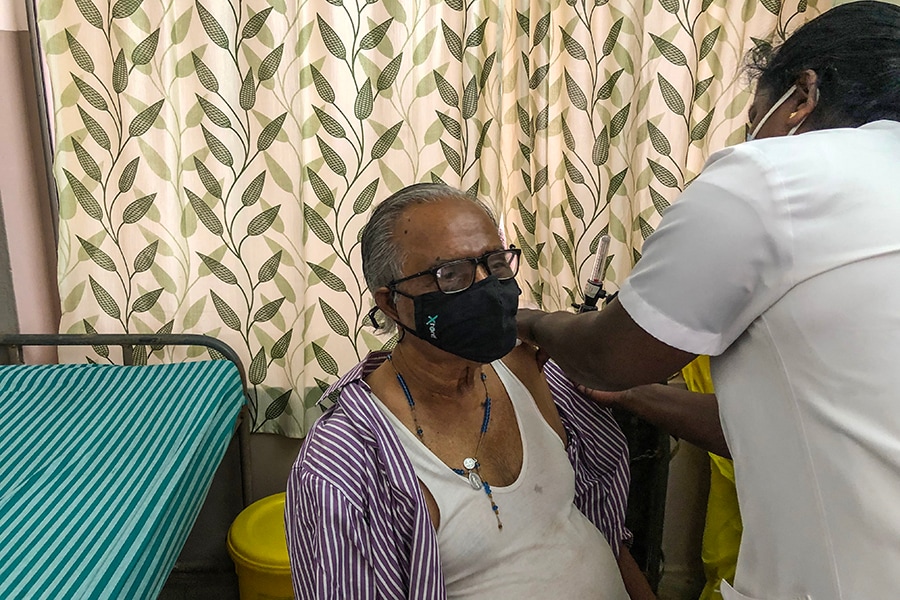
As India stumbles, one state charts its own Covid-19 course
Though supplies have tightened, Kerala's hospitals enjoy access to oxygen, with officials having expanded production months ago while coordination centres, called war rooms, direct patients and resources

An 80+-year-old person getting his first dose of Covishield vaccine in a private hospital in Kalpetta, Kerala on 6th April 2021. Photo by: Mexy Xavier
When India’s second coronavirus wave slammed the country last month, leaving many cities without enough doctors, nurses, hospital beds or lifesaving oxygen to cope, Sajeev V.B. got the help he needed.
Local health workers quarantined Sajeev, a 52-year-old mechanic, at home and connected him with a doctor over the phone. When he grew sicker, they mustered an ambulance that took him to a public hospital with an available bed. Oxygen was plentiful. He left 12 days later and was not billed for his treatment.
“I have no clue how the system works,” Sajeev said. “All that I did was to inform my local health worker when I tested positive. They took over everything from that point.”
Sajeev’s experience had much to do with where he lives: a suburb of Kochi, a city in the southern Indian state of Kerala. Kerala officials have stepped in where India’s central government under Prime Minister Narendra Modi has failed, in many ways, to provide relief for victims of the world’s worst coronavirus outbreak.
©2019 New York Times News Service




